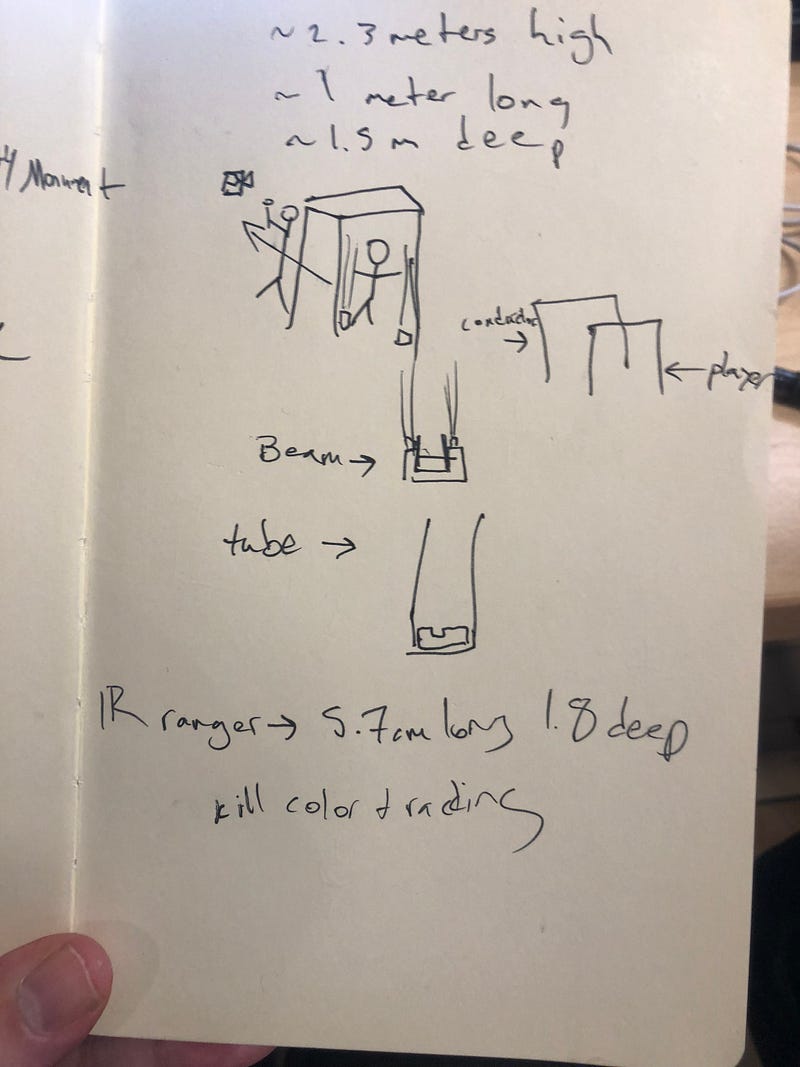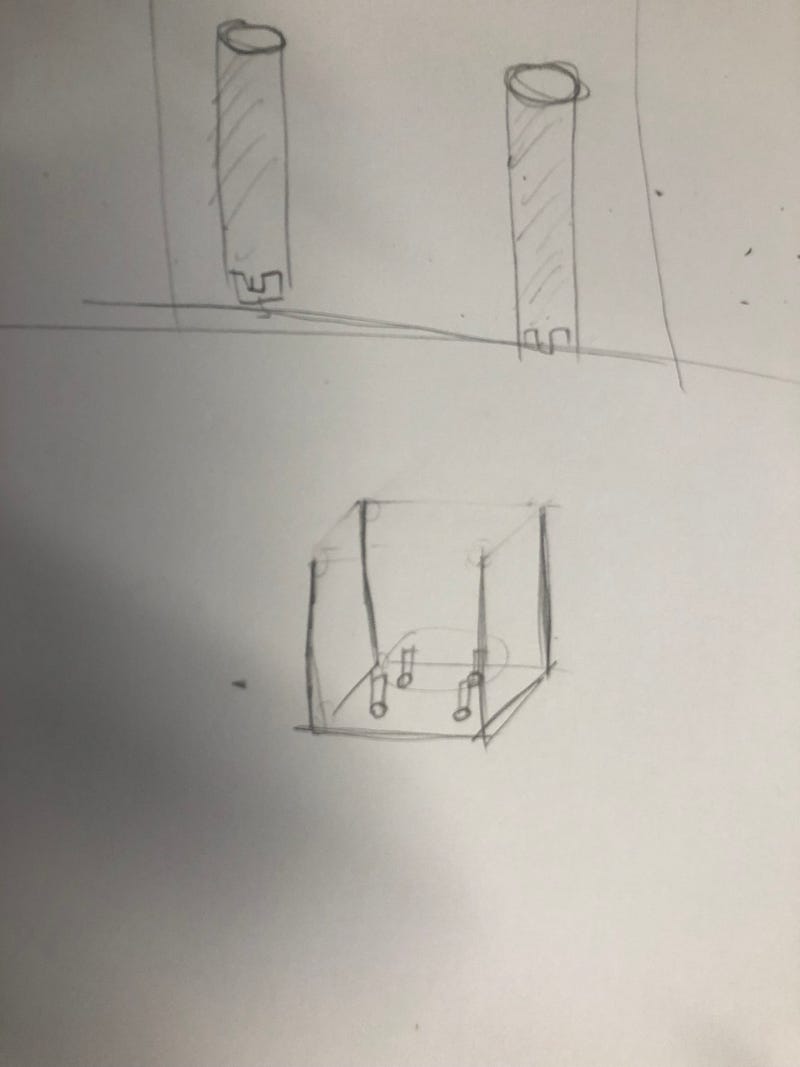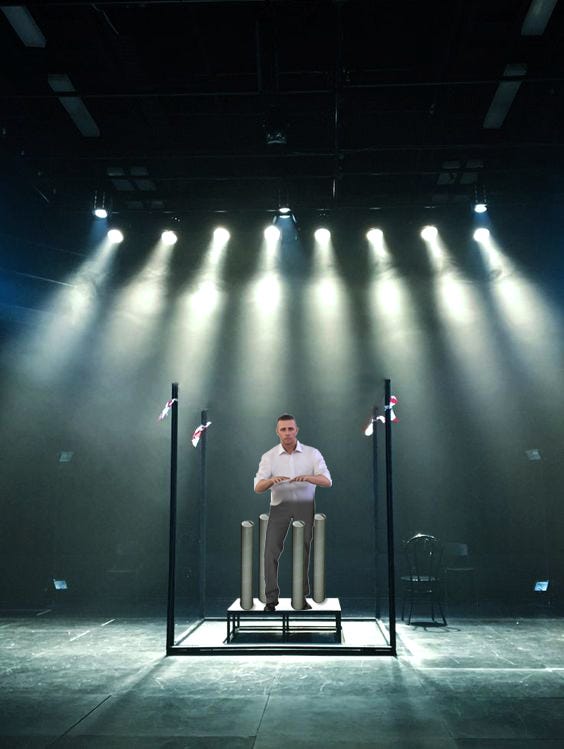Post-Testing Update: Airgan? Invisible Bagpipe?

After a week of testing different technologies and talking about design, Hayk and I have arrived at something in the same vein as the previous update but significantly clearer: the Airgan (we’re still workshopping the name).
You can check out our code thus far here: https://github.com/brondle/invisibleorchestra
We tested the two parts of the original design: a conductor with a wand being tracked that controlled two LEDs, and a player with an IR ranger being used to change notes. While we had technological success with these ideas, as you can see in the videos below, we came to the conclusion that this model would work best as a game: the player has to follow the conductor and is penalized somehow if they fail to do so. Neither of us was particularly interested in making a game — we wanted something more open-ended and experiential.
Having come to this conclusion, we decided to think about what we liked best about the original idea and how to best stay true to that without turning it into a game.
What we liked:
- Having 2 players/”collaboration” on sounds being made.
- LEDs tracking player motion
We quickly realized that, although it was fun (and a whole lot of work), the p5 color tracking and conductor’s wand weren’t central to what we liked about the idea. Plus, they added a layer of complexity that was likely unnecessary and would end up costing us valuable time on perfecting the project. So we went back to the drawing board, and came up with the following:


We want to create a 2-player instrument using 4 IR rangers and opaque plasting tubing. The LEDs, in the vein of our initial testing, will just mirror the movement of the players’ hands over the IR rangers.
That brings us up to now:
What we have done:
- Code: IR ranger tracking to both Tone.js and an LED strip. Full sample library of instruments to play with set up in Tone.js
- Materials: 3 IR rangers and 1 LED strip being shipped, 1 LED strip and 1 IR ranger currently in our possession.
- Testing: wireframe of everything we need is there and functional.
What we still ~absolutely~ have to do:
- Either improve IR to tone latency or switch to a MIDI hooked up to the arduino.
- Get plastic/acrylic tubing and fabricate.
- Prettify LED tracking (add more colors & effects).
What we’d ~like~ to do:
- Set up on a Raspberry Pi.
- Choreograph a performance.